Hernia International (Spanish Team) mission at Mongolia. 2018
The Team:
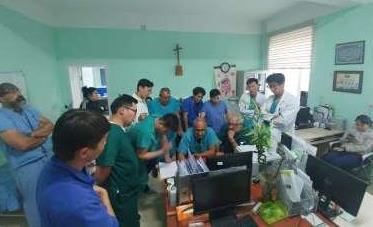
Enrique Navarrete de Cárcer, surgeon. Team Leader. Sevilla
Francesc Marsal Cavallé, surgeon. Tarragona
Juan Carlos Gomez Rosado, surgeon. Sevilla
Jose Lozano Cavalo, anesthesist. Sevilla
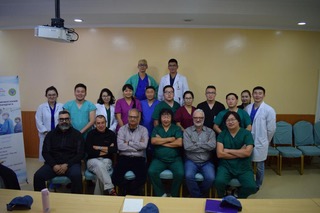
The cities:
1. Hospital General Básic de Tsetserleg
Tsetserleg, also transliterated as Cecerleg (Mongolian: ????????, lit. ‘garden’) is the capital of Arkhangai Aimag (province) in Mongolia. It lies on the northeastern slopes of the Khangai Mountains, 360 miles (600 km) southwest of Ulaanbaatar. It has a population of 16,553 (2000 census, with Erdenebulgan sum rural territories population was 18,519), 16,618 (2003 est.), 16,300 (2006 est.)
Tsetserleg is geographically located in the Bulgan sum in the south of the aimag. It is not to be confused with Tsetserleg sum in the north. In 1992 Tsetserleg was designated as Erdenebulgan sum, which has area of 536 km².
2. Second General Hospital Ulanbaator.
Ulaanbaatar, formerly anglicised as Ulan Bator /?u?l??n ‘b??t?r/ (Mongolian: ???????????, [????m.b??t???r], Ulaγanbaγatur, literally “Red Hero”), is the capital and largest city of Mongolia. The city is not part of any aimag (province), and its population as of 2014 was over 1.3 million, almost half of the country’s total population.[1] Located in north central Mongolia, the municipality lies at an elevation of about 1,300 meters (4,300 ft) in a valley on the Tuul River. It is the country’s cultural, industrial and financial heart, the centre of Mongolia’s road network and connected by rail to both the Trans-Siberian Railway in Russia and the Chinese railway system.[3]
The city was founded in 1639 as a nomadic Buddhist monastic centre. It settled permanently at its present location, the junction of the Tuul and Selbe rivers, in 1778. Prior to that occasion it changed location twenty-eight times, each new location being chosen ceremonially. In the twentieth century, Ulaanbaatar grew into a major manufacturing center.Ulaanbaatar is a member of the Asian Network of Major Cities 21. The city’s official website lists Moscow, Hohhot, Seoul, Sapporo and Denver as sister cities.
The tour:
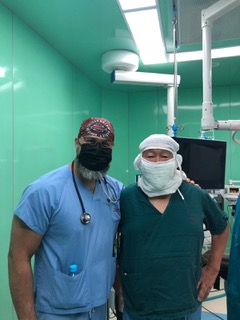
One way, was made from the city of Barcelona, in flight with the company China Air, with a stopover in Beijing. The duration was 16 hours including the technical stopover at the Beijing airport, where we need to go through the security check again. Fortunately, there were no delays or customs incidents. We do not carry clinical material or medicines. Only about 80 meshes already sterilized and properly packed.
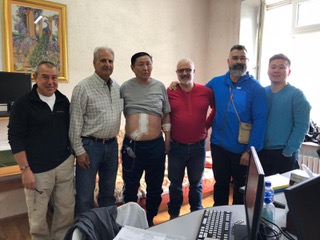
Upon our arrival at Ulaan Bataar International Airport, both Enkhee (in charge of all the coordination and logistics of the mission), as well as Dr. Sinchan and Dr. Chadraa and Telmen, staff surgeons and resident of the Second General, were waiting for us.
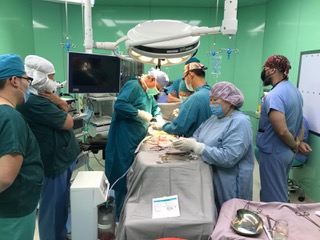
The first week of work was performed at the basic general hospital of TseTserleg. The transfer there, was made immediately from the airport. The city was located 600 Kms west of UlanBataar. The trip was organized completely by Enkhee and we traveled in an SUV and a van for luggage. We traveled for 11 hours along the Mongolian steppe, stopping several times to stretch our legs, recover strength and take some pictures of the landscape.Dr. Naranthuya, head of surgery at the hospital and her staff, were waiting for us at the destination. We met the hospital in the surgical area and reviewed the patients the next day.
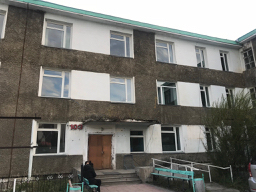
The accommodation is made free of charge (thanks to the hospital staff’s deference), in a small hotel very close to the hospital. Breakfast, lunch and dinner was always prepared in the hospital, also free of charge The working week at TseTserleg was Monday through Thursday, since on Friday we needed to travel back to the capital UlanBaatar, to be there on Friday night.
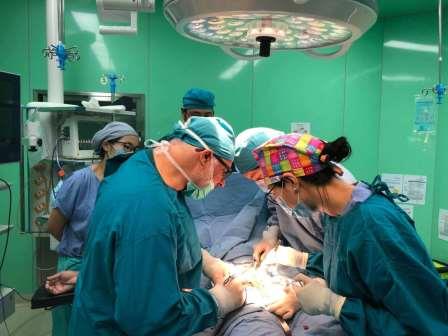
Dr. Naranthuya and her team, together with the surgeons who accompanied us, had selected all the patients of the week and we reviewed them every day. The majority were patients with inguinal and umbilical hernias, and 2 large incisions. 4 children and 7 adults. There were no more selected patients and 2 were rejected for surgery due to severe concomitant pathology. A bilateral inguinal hernia was performed using a laparoscopic TAPP approach.
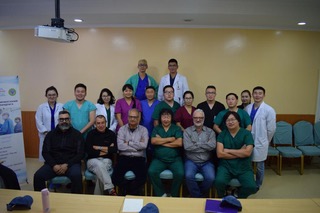
All the patients left the following day. There were no complications.The collaboration of all the hospital staff was complete, and their hospitality similar. Breakfast and lunch was made every day at the hospital and dinner at a cafeteria near the hotel, which was also booked and paid for by the hospital. The infrastructure of the hospital is basic, and the operating rooms (2) meet the minimum conditions to be able to work: sterilization center, basic instruments, modern anesthesia system, electric scalpel and adequate light. However, the catalog of sutures is scarce and in small quantity. They do not have meshes for the repair of hernias, and although there is a modern laparoscopic tower, the laparoscopic instrument is obsolete. Antibiotics, analgesics and anesthetic drugs are basic and scarce.

After the return trip (12 hours) to the capital on Friday, restful rest in a great hotel near the Second General Hospital, which Enkhee achieved thanks to his good work. Saturday dedicated to know the capital and surroundings. On Sunday we went to the Hospital, to meet Prof. Naraa and his team, made up of several surgeons and residents, who made us a great welcome, with food and Vodka included. Visit to the facilities and visit the patients scheduled for Monday.
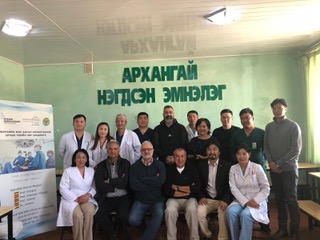
From Monday to Thursday, surgery to double the operating room and on Monday to three simultaneous operating rooms. The facilities are great, with a modern and functional surgical area. The collaboration of Prof. Naraa’s team was complete. Daily we were accompanied to review the patients of the previous day and the few who were admitted several days. The control of the patients was complete by the local surgical team.
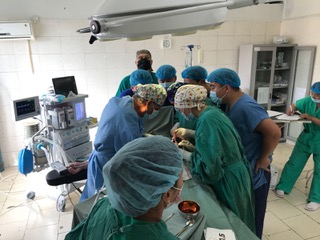
In total, 25 patients underwent surgery in 4 days, all of them with large incisional hernias, or recurrent or large inguinal hernias. 7 of the patients were operated by local surgeons and assisted by a team surgeon. There were no complications, and all the patients had left on the Saturday of our departure.
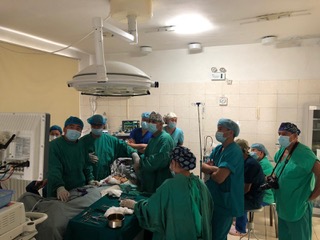
On Thursday afternoon, we devoted 3 hours to presentations and videos about the new techniques of abdominal wall, the clinical guide of the EHS and the types of meshes available today. They were followed with a lot of interest by the whole department of surgery, and non-facultative personnel.
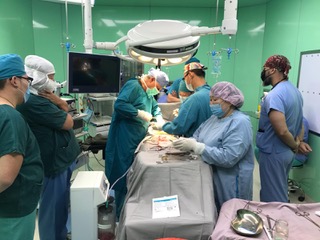
The only drawback is the absence of surgical meshes, which usually do not have. The catalog of sutures is correct in quantity and variety.
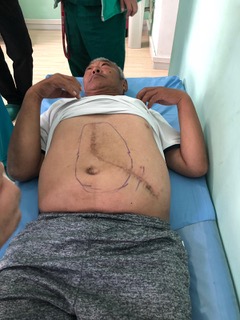
Once again, the infinite kindness of all the hospital staff, from Prof. Naraa, to all the Staff, residents and auxiliary surgical staff. We have definitely felt at home or in our hospital in Ulan Bataar.
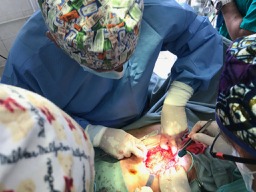
In summary:
The experience has been absolutely positive. The hernia pathology is prevalent in that country, although it is not a health problem. Perhaps it would take more training from local surgeons, so that they can master all the modern techniques in wall surgery. Local surgeons in both the capital and rural hospitals are eager to know and develop modern techniques for the repair of hernia pathology, but may not be able to access it for organizational or economic reasons.
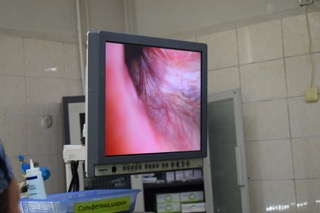
I think Hernia International has a fundamental role in teaching and training Mongolian surgeons.
For future teams that wish to cooperate in this country, I summarize some tips:
It is a fascinating country to know. The kindness and hospitality of its inhabitants, it is worth experiencing.
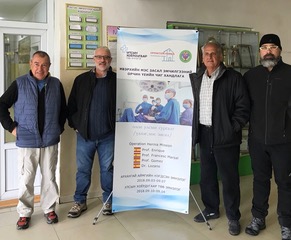
Trust completely in Enkhee: elle is in charge of the coordination and organization of everything related to logistics and transfers.
It is essential to carry some basic surgical material, especially for work in rural hospitals, with worse infrastructure. This includes sutures and surgical meshes. No need to take medication or anesthetic equipment.
There are modern and fully functional laparoscopic towers, but with laparoscopic and scarce obsolete material, especially in rural hospitals. Local surgeons demand teaching in laparoscopic abdominal wall techniques.
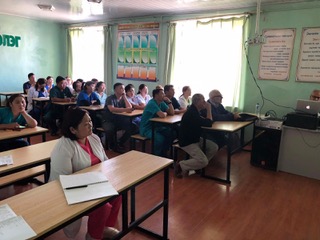
The general infrastructure of the country is acceptable, although the distances are large and require a day of travel both on the way and on the way back. The local food is excellent, although very different from the European or American. In Ulan Bataar, there are restaurants or places to eat all kinds of foods.
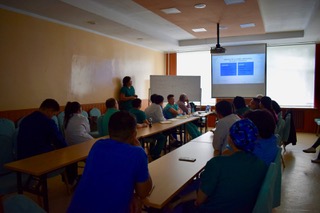
Mongolia is a great destination for Hernia International teams. The sanitary infrastructure of the country is improving, but local surgeons demand training and training in modern open and laparoscopic techniques, to be able to implement them in the portfolio of services of their hospitals.
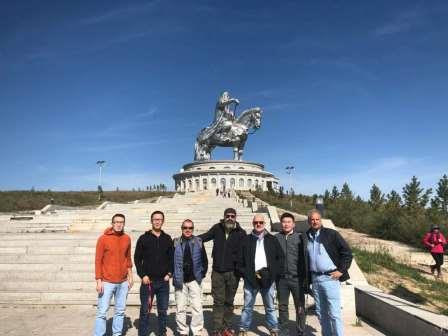
Enrique Navarrete de Cárcer
Team Leader

